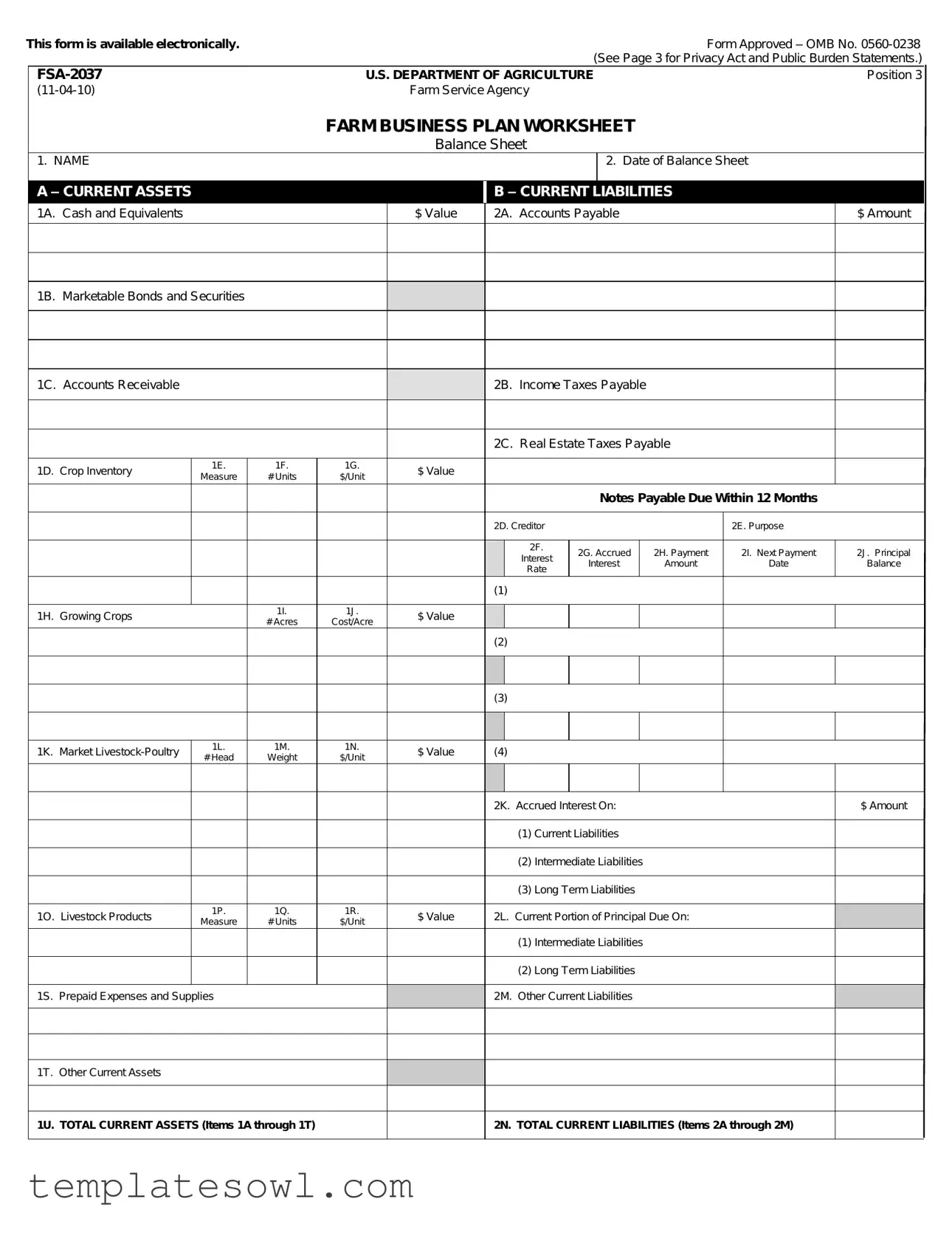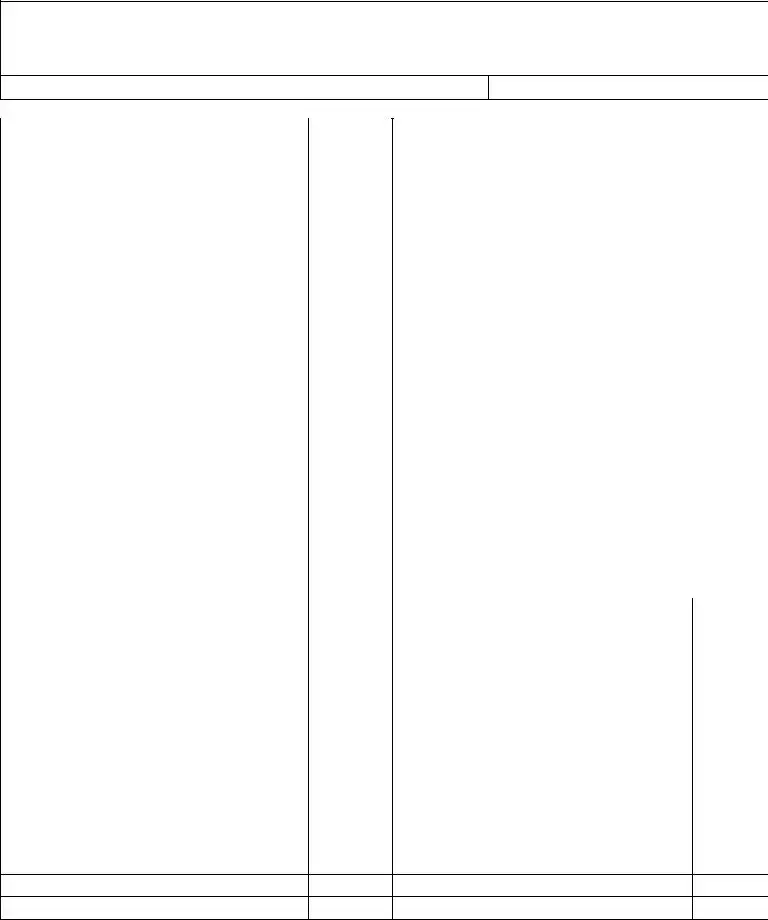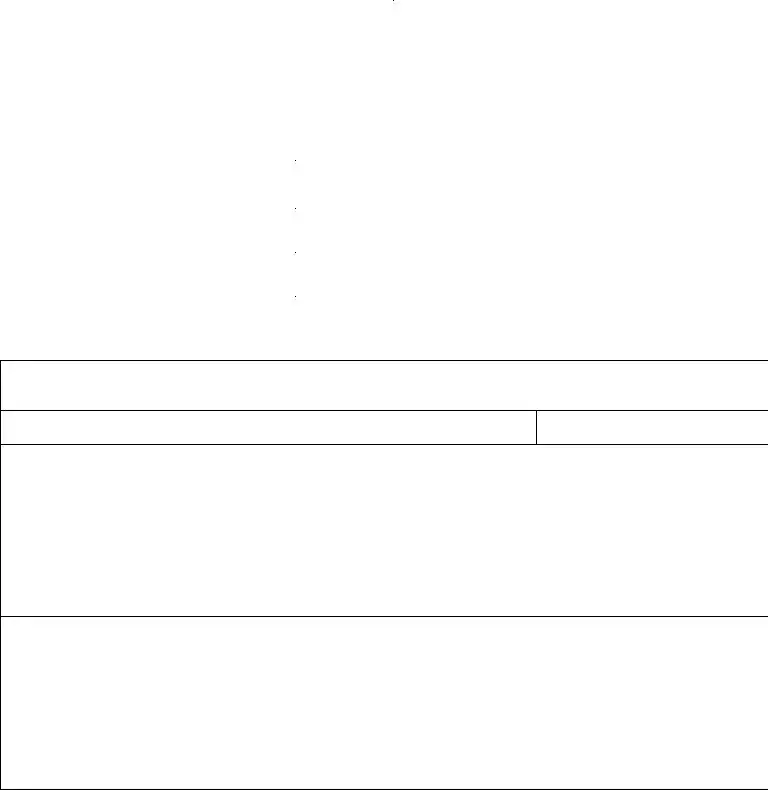What is the FSA-2037 form?
The FSA-2037 form is a Farm Business Plan Worksheet utilized by the U.S. Department of Agriculture's Farm Service Agency. It helps farmers and ranchers document their financial status, including assets, liabilities, and overall equity. This structured approach allows for a clear assessment of a farm business's financial health, which is essential for securing loans and managing finances effectively.
Who needs to fill out the FSA-2037 form?
This form should be completed by farmers and ranchers who are seeking loans or loan guarantees from the USDA. It is critical for those looking to demonstrate their creditworthiness and financial viability, thus making it easier to obtain financial assistance for agricultural operations.
How can I access the FSA-2037 form?
The FSA-2037 form is available electronically, making it more accessible for farmers and ranchers. It can often be downloaded from the USDA's Farm Service Agency website or obtained directly from local FSA offices.
What information is required on the form?
The form requires detailed information regarding both current and long-term assets and liabilities. This includes cash on hand, value of properties, accounts payable, machinery, and livestock, among other financial items. Personal assets and liabilities may also need to be included, contributing to a comprehensive view of the applicant's financial situation.
What are current assets and liabilities?
Current assets refer to what the farm or ranch owns that can be easily converted into cash within a year, including cash, inventories, and receivables. Current liabilities are debts that need to be settled within the same timeframe, such as accounts payable or short-term loans. Understanding these components is vital for assessing financial stability.
Why is accuracy important when filling out the FSA-2037 form?
Providing accurate information is crucial for several reasons. Firstly, it builds trust with lenders and ensures that the recipient of funds is financially responsible. Secondly, inaccurate or incomplete information can result in penalties or a denial of the loan application, hindering the farmer's ability to receive necessary financial support.
How long does it take to complete the FSA-2037 form?
Completing the FSA-2037 form typically requires an estimated 1.25 hours. This estimate includes reviewing instructions, gathering financial data, and completing the form. It is essential to allocate sufficient time to ensure that the information is thorough and accurate.
What should I do if I have questions while filling out the form?
If questions arise while completing the FSA-2037 form, it's advisable to contact your local FSA office. Staff members are usually equipped to provide guidance and clarify any uncertainties. Additionally, online resources may also be available to assist in navigating the form's requirements.




